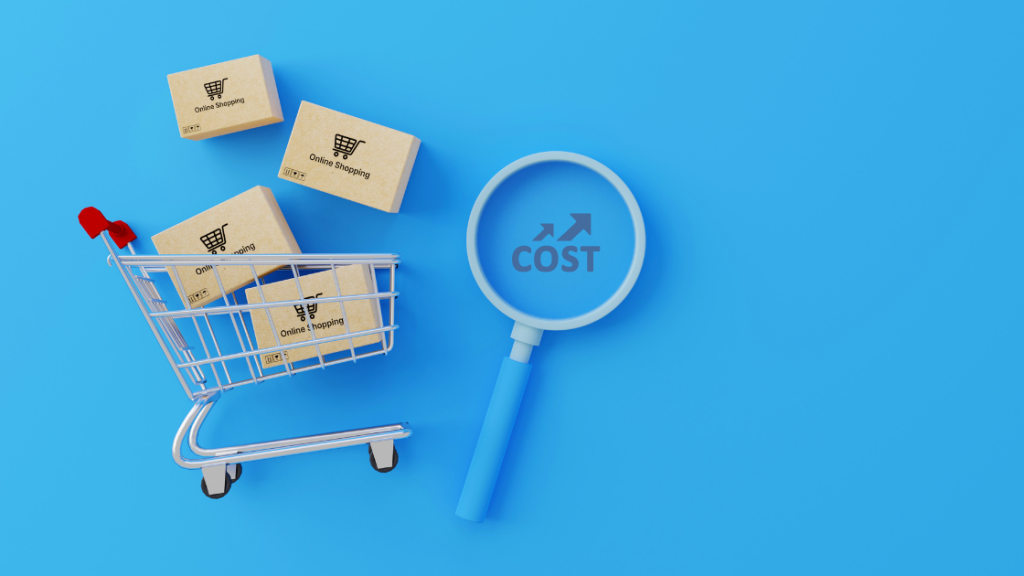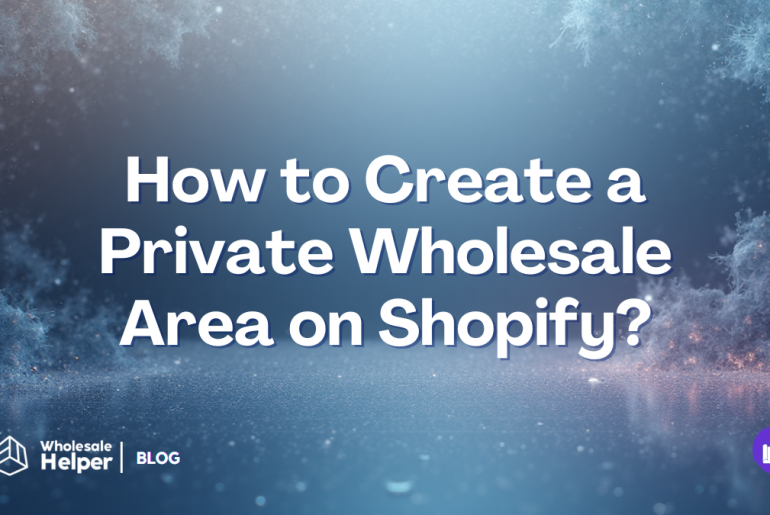The craze for online shopping is burgeoning. In 2025, experts estimate that 267.83 million US users will shop online. When a business has a significant online presence, it attracts more potential customers and builds brand recognition. It is a long-term investment and provides enormous revenue opportunities for business owners.

However, it can be challenging for business owners to estimate the cost to build an ecommerce website. A website has many components, and each one affects the final expense. The selection of the best platform for your website and the add-ons you can purchase, depends on how much you can spend. You can find yourself overspending if you do not have a defined budget.
Primary factors affecting the building cost for Ecommerce website
In the realm of eCommerce, your choice of platform—whether it’s a custom solution or a popular platform like Shopify or WooCommerce—can significantly impact both initial and ongoing costs. Platforms like Shopify offer an all-in-one solution with hosting and various plugins at a monthly fee, making it a cost-effective option for startups. Meanwhile, custom solutions offer unparalleled customization at a higher upfront cost but can be more economical in the long run due to lower ongoing expenses.
1. Design & template of an e-commerce store
The overall design of an e-commerce website is a crucial cost factor that is vital to any business’s success. The eye-catching website design helps transform a visitor into a potential customer. So, it is always a smart move to hire an expert to handle it for you. However, the expense of an attractive logo for your website might range from USD $20 – $100. For a budget-friendly option, consider using a free logo maker to create a starting point for your brand identity.
An outdated website design can give visitors a negative impression of the business. It implies that there is a chance of losing customers. Your company needs a web design that complements your brand to prevent this from happening.
A responsive eCommerce website can cost as little as $10,000 to $250,000 or more, depending on the requirements. You have the option of using a paid template or a free existing template. A premium theme may cost between $20 and $120. For a more distinctive appeal, leveraging artistic design templates can set your brand apart in the digital storefront, providing a diverse range of customizable options to enhance the appeal of your e-commerce website without exerting pressure on your budget.
Of course, if you’re looking to refresh an existing site, you don’t have to start from scratch. Using a plugin is the best way to migrate your website to its new home, for example, and can keep costs down at the design stage.
2. The page count of a website
The page count can influence the cost of your Ecommerce website. These websites often need more pages than other business websites. Although more pages may increase the cost of creating a website, it is crucial to understand that each page can quickly return its worth through high product sales.
Your e-commerce site should have a separate page for each of your products. As the business develops, you need to consider adding additional pages to accommodate the expanded selection of products. With this strategy, your website will remain dynamic and sales-optimized.
Categorizing pages can help in displaying all of your products. Besides that, having personalized profile pages for registered users on the website can also attract potential customers.
While it may need substantial initial investment and incur increased costs for designing the e-commerce website, it can offer greater long-term revenue potential.
3. Copy and content
Every website, including e-commerce stores, needs copywriting. The only thing about e-commerce websites is that they require fewer text-only pages than other websites. There is a need to pay attention to the crucial pages, which include privacy policies, terms and conditions, and many more.
You can also create pages to display your products under specific categories. The number of words you want to add to your pages will determine the copywriting charges.
Brief pages with a few hundred words and no pictures will not cost anything. However, if a page includes 3000 words, subheadings, interactive elements, JavaScript inserts, and special coding, it will increase the e-commerce website design expenses.
Nevertheless, you still get value for your money. Longer pages perform better in search engines, whereas shorter pages are perfect for delivering information in a few seconds.
For an e-commerce website, an effective combination of both sites can bring in a lot of new visitors and clients.
Also Read: Shopify Website Builder: All You Need To Know
4. Other Functionalities
When developing an e-commerce website, it is necessary to incorporate all the functionalities, including customization, consumer identity protection, checkout procedures, shopping carts, and many other functionalities.
Also, while listing or adding new products to your store, you can even show multiple images or videos of those products to look more enticing. Due to regulations, for some products, you may also mention additional information like specification sheets, MSDS sheets, and other documentation.
To maintain a smooth user experience and ensure your e-commerce site functions properly across all platforms, it’s important to test these features thoroughly. This includes verifying that product listings, media displays, and regulatory documents load correctly on every device. One way of improving quality with automated testing is by using tools that simulate real-world browsing conditions, ensuring your site works consistently for every visitor.
If you are willing to sell wholesale on your store, you might have to spend a fortune into creating a store catering to wholesale. However, if you are a Shopify store owner, there are certain apps that can help you quickly operate wholesale from your existing store without any additional development costs.
These things can take some time to figure all of that out, so it is better to consult a web designer or developer for advice on how to proceed with your particular website. This can also cost you a good amount of money.
5. On-Page SEO
Search engine optimization (SEO) for your e-commerce store refers to making changes to the website to improve its visibility in the Google search engine. Also, it plays a significant role in the e-commerce website’s long-term performance.
A higher search engine ranking is essential to boost revenue because it can attract customers. Otherwise, the constant flow of new and returning consumers will stop what you require to be in business.
Regular investment is necessary for e-commerce SEO. Maintaining a high ranking in search engines takes a lot of work but helps to keep your competition away. Regularly updating the website is essential for attracting new visitors. Therefore, SEO is a continuous process.
Failing to do so can result in the business lagging behind its rivals. Thus, there is a need to allocate a budget for this ongoing website expense.
6. Database integration
For a website, database integration is usually optional; however, e-commerce websites must integrate databases.
By utilizing database integration, your company can store all of its data, including clients, employees, and products. Therefore, database integration is essential if you want your entire organization to have access to a shared hard drive containing all information.
However, there is a need for database integration for customers. A database lets users register on your website, specify preferences, and have a more customized experience.
Clients will not be required to enter their credit card numbers again because database integration can save them. If the clients do not want to store credit card details, they can store their usernames and passwords.
Database integration is a cost to consider when developing an e-commerce website, whether you want to ease customer shopping experience or expedite company communication.
Conclusion – Cost To Build An Ecommerce Website
Due to the rising popularity of online shopping, e-commerce websites have become crucial for developing a company’s online presence. The development cost of these websites will depend on several variables, including page count, web design style, content, SEO, database integration, and functionality.
Set a defined budget and consult with professionals to create an intuitive and profit-generating e-commerce platform.
Offer Wholesale Pricing & Volume Discounts on Your Shopify Store
Try the Wholesale Pricing Discount app for Free!
Frequently Asked Questions
What key factors should I consider to manage the e-commerce site cost?
When it comes to controlling your e-commerce site’s costs, you’ll want to carefully choose a platform that fits your budget while still delivering the features you need.
How can I find a cost-effective solution for my ecommerce website without compromising quality?
To find a cost-effective solution for your ecommerce website, research various platforms and templates that offer the best value for money. Consider open-source solutions with a strong community support, which can significantly reduce the cost for an ecommerce website while maintaining high quality.
What strategies can help minimize ecommerce website pricing while maximizing functionality?
Minimizing ecommerce website pricing requires strategic planning, such as choosing scalable platforms, prioritizing essential features, and leveraging cost-effective third-party services for payments, SEO, and customer management.
What are the hidden fees that could affect the e-commerce site cost?
Be vigilant about hidden fees that can inflate your e-commerce site cost, including domain renewal, hosting upgrades, transaction fees, and costs associated with third-party apps or plugins not initially accounted for.
What role does custom web design play in ecommerce website pricing?
Custom web design plays a significant role in ecommerce website pricing. While it offers a unique and tailored user experience, it can substantially increase costs, making it essential to balance custom elements with budget constraints.
Why is ongoing maintenance crucial, and how does it contribute to the cost e-commerce website must consider?
Ongoing maintenance is crucial for ensuring your site remains secure, fast, and relevant. This ongoing commitment contributes to the cost e-commerce website owners must consider for the longevity and success of their online store.






![How to Create a B2B or Wholesale Registration Form on Shopify [2025] How to Create a B2B or Wholesale Registration Form on Shopify](https://wholesalehelper.io/blog/wp-content/uploads/2025/10/How-to-Create-a-B2B-or-Wholesale-Registration-Form-on-Shopify-2025-770x515.png)


1 Comment
Great breakdown of the costs involved in building an eCommerce website! I appreciate the clarity around platform choices and hidden costs like hosting and maintenance. This guide is a must-read for anyone planning their online store. Thanks for the insights!